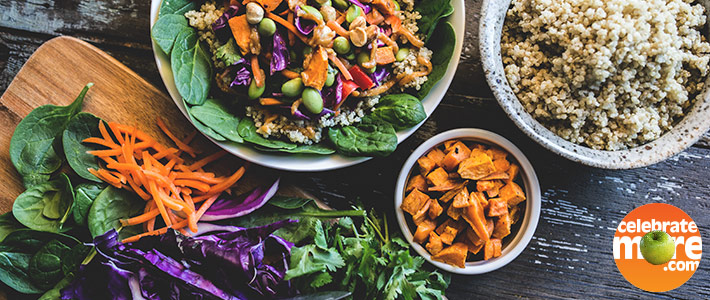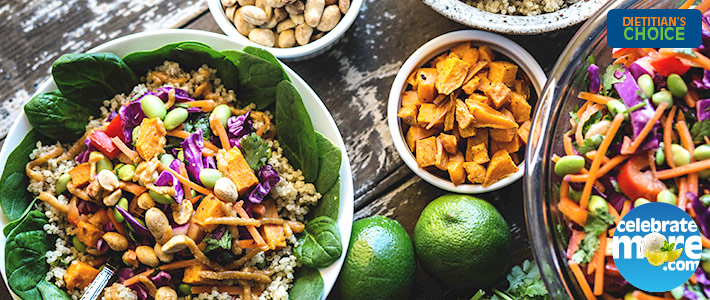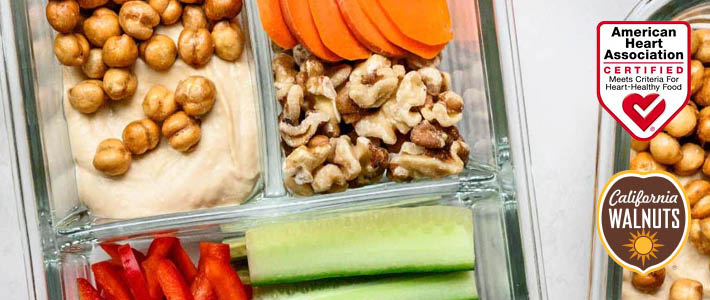
Tags: plant based
Blenditarian Tacos
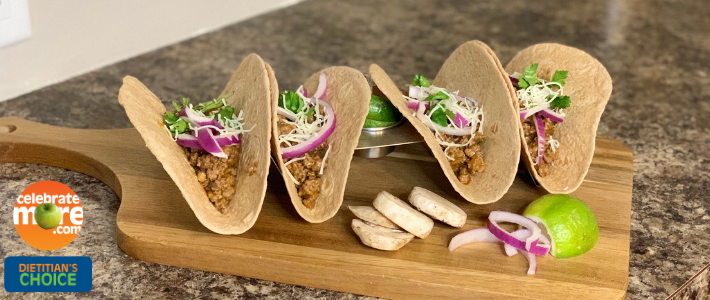
Buffalo Cauliflower Nachos
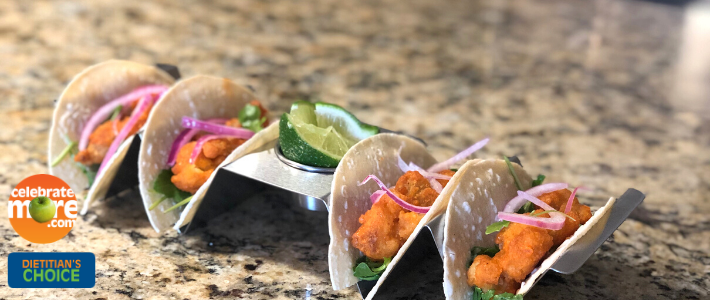
This recipe is sponsored by Wholly Veggie!
Sweet and Spicy Lunchtime Wraps
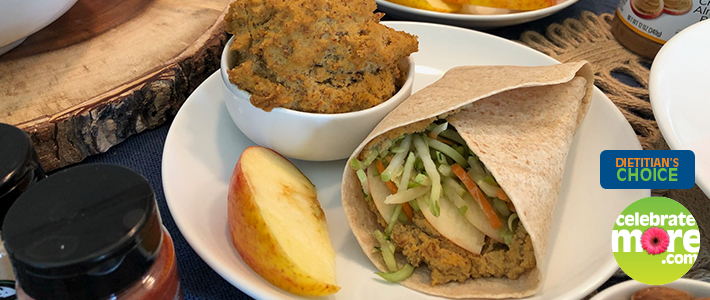
Almond Butter Cookie Dough
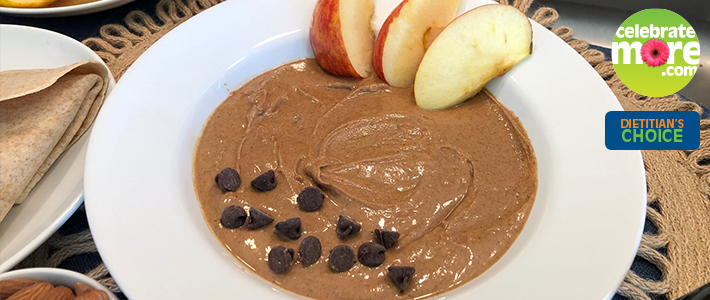
Caramel Almond Butter Dip
P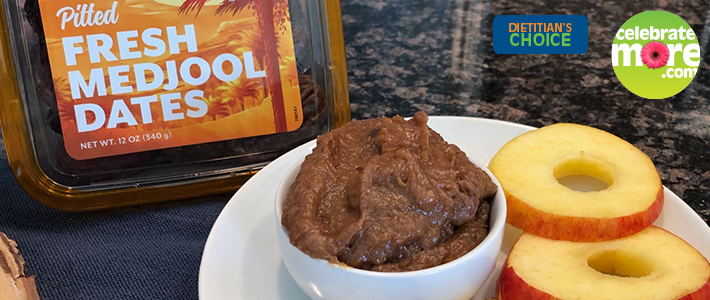 HOTO
HOTO
Food Trends 2020
Happy New Year!! We are so grateful for all of our guests and the opportunities that our team of Registered Dietitians have had to share our passion for health & wellness with you and your families. We look forward to another great year in 2020!
 Meet Our Dietitians
Meet Our Dietitians
For those of you who don’t know us, we are Amy & Emily. Both Registered Dietitians who love to share recipes and resources to make healthy eating simple and delicious. We’re here to inspire you and help you fall back in love with food in a healthful way. To stay up-to-date with our latest articles, recipes, and resources, be sure to check back often to CelebrateMore.com/dietitians.
Food Trends 2020
As we gear up for 2020, our team of dietitians want to share what we believe are going to be some strong health and wellness trends when it comes to food for the New Year. The three big trends include food transparency (with a big focus on local products), plant-based foods, and functional foods and beverages (think gut health!).
>> Food Transparency (Local)
Consumers are continuing to look for more information on the shelf-tag and on the product that help them know what’s in their food (and what’s not) as well as where it was sourced. Labels such as “Natural” and “Organic” will be sought-after by consumers, and in 2020, we believe we will see an increase in consumers who are looking for “Local”. Here in the Midwest, we are proud to carry local products including produce, grains, meat, poultry, and even snacks. Although all local produce isn’t available all year round (thanks to our cold winters), we still have a variety of items supporting our local farmers.
>> Plant-Based Foods
We’ve seen an increase in popularity of plant-based foods and the trend will only gain traction as we settle into 2020. Plant-based foods (especially produce items) can help consumers meet their daily goal of fruits and vegetables. In addition to produce, consumers are looking for more plant-based sources of protein, as well. There are many great options out there, including whole grains (such as quinoa, wild rice, etc.), edamame, and even tempeh. There are many other plant-based sources of proteins, such as burgers, too. Check out Emily’s past article on plant-based proteins, Plant Based Or Plant Based Junk Food?. She will help guide you through the aisles ensuring that your plant-based choices are the best choices in regards to nutrition.
>> Functional Foods (Good for the Gut!)
More and more consumers want to be sure that the foods they are eating are beneficial to their health- in particular, good for their gut! Probiotics are some of those good-for-your-gut foods and can be found in many fermented foods. Some fermented products gaining popularity in 2020 include kombucha, miso paste, sauerkraut, and kefir.
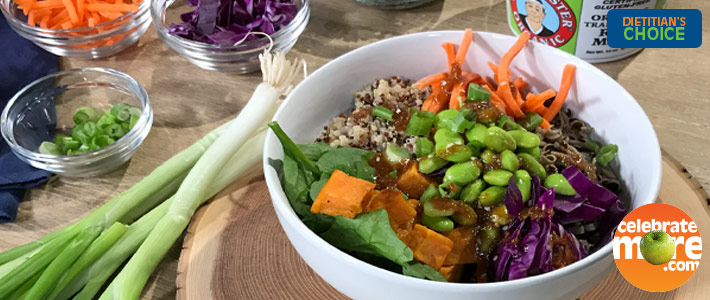
Minnesota Wild Rice Power Bowl with Miso Lime Dressing
We’re serving up an easy and delicious plant-based power bowl that uses local ingredients and is good for your gut!! This recipe is perfect for a busy weeknight and can be easily made ahead of time to pack for lunches throughout the work-week.
Wild Rice Power Bowls with Miso Lime Dressing
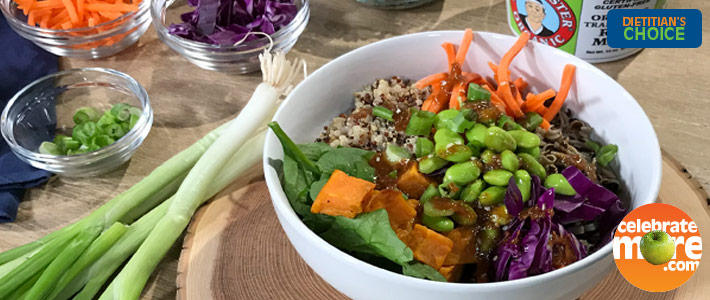
Plant Based or Plant-Based Junk Food?
 Plant Based or Plant-Based Junk Food?
Plant Based or Plant-Based Junk Food?
It’s no news that plant-based diets are gaining popularity, but what does plant-based mean? To some it may mean going vegan, while others say it’s being vegetarian, while still others may describe it as incorporating more plant foods into their daily eating patterns. Regardless of how it’s described, as a Registered Dietitian, I love to see more and more people turning to plants! From fruits and veggies, to whole grains, nuts and seeds, plants are all important to have in a balanced diet.
With the popularity of plant-based foods, this trend is here to stay. However, just as with other trends, food companies thrive on using marketing techniques to entice shoppers to buy their products. The animal protein alternative category has exploded with products designed to replace or imitate traditional meat and dairy products, which include plant-based milk, tempeh, tofu, bean burgers, as well as, plant-based sausages, deli meats, crumbles, nuggets, and steaks.1 While the traditional meat and dairy alterative category grows, it’s important to learn how to navigate the Nutrition Facts Label to determine if these alternatives are plant-based protein or plant-based junk food.
How to navigate the Nutrition Facts Label:
-
Saturated Fat:
While one would think that switching to a plant-based meat alternative would result in lower saturated fat, the reality is that many meat alternatives, especially hamburger imitators, have comparable amounts. Our team suggests looking for options that have less than 4 grams of saturated fat per serving—or just look for the ‘Dietitian’s Choice’ logo!
-
Sodium:
This part of plant-based meat alternatives is often left off front-of-package labeling. The amount of sodium in these products can vary considerably from product to product and brand to brand, however, it is important that consumers check this part of the Nutrition Facts Label. With some brands reaching up to 700 mg of sodium or more for imitation meat, shoppers can look for lower sodium options such as black bean burgers or even adding spinach to your burger patties next time you grill out at home. If you are purchasing packaged meat alternatives our team suggests looking for options that have less than 450 mg of sodium per serving—or just look for the ‘Dietitian’s Choice’ logo!
-
Protein:
Plant-based products must have comparable protein, right? Not all animal alternatives are created equal when it comes to protein. For example, soymilk has 7 grams of protein per cup compared with almond milk which only has 1 gram. If you are purchasing a milk-alternative for protein, we suggest looking for a product with at least 6 grams of protein per serving. If you are purchasing a meat-alternative, we suggest looking for the ‘Dietitian’s Choice’ logo on the shelf-tag.
The plant-based protein category is ever evolving. While these foods can fit into a balanced diet, it is important that shoppers recognize that just because a product is labeled ‘plant-based,’ it doesn’t necessarily mean it’s more nutritious! Use the tips above to help you find plant-based foods that fit into your lifestyle! And don’t forget—fruits and veggies are plant based, too! #HaveAPlant
Happy & healthy eating!
Emily, MFCS, RD, LD
1. Schroeder, B. (2019, June 18). Plant based food products started with milk, now taking on meat, what’s next? Retrieved from https://www.forbes.com/sites/bernhardschroeder/2019/06/18/plant-based-food-products-started-with-milk-now-taking-on-meat-whats-next/#6b4f2a2821da
2. Olayanju, J. (2019, July 30). Plant-based meat alternatives: perspectives on consumer demands and future directions. Retrieved from https://www.forbes.com/sites/juliabolayanju/2019/07/30/plant-based-meat-alternatives-perspectives-on-consumer-demands-and-future-directions/#7a510e266daa
3. Gelsomin, E. (2019, August 8). Impossible and Beyond: How healthy are these meatless burgers? Retrieved from https://www.health.harvard.edu/blog/impossible-and-beyond-how-healthy-are-these-meatless-burgers-2019081517448
Cauliflower Steaks With Coconut Turmeric Relish
Plant Based Eating – Staying On Trend
 Staying on Trend with Plant Based Eating
Staying on Trend with Plant Based Eating
Plant based foods are trending in the world of health and nutrition, and for good reason! By aiming to incorporate more plant-based foods in your meals and snacks, you’ll increase your serving of fruits and vegetables, vary your protein sources and boost your fiber intake. All can aid in digestive health, weight management, and overall health.
Choosing more plant-based foods doesn’t mean throwing out all your meat and poultry options. It simply means adding more variety to your food choices to jazz up your meals and snacks! You’re likely eating some plant-based foods as part of your daily routine already. Fruit, vegetables, whole grains, and beans are all examples. With spring upon us, it’s a great time to be thinking about potentially having a vegetable garden or having some tomatoes or green peppers in potted plants on your deck. It’s an easy and inexpensive way to have more produce on hand.
Digestive Health
As a registered dietitian, I want to be clear that eating meat and poultry is not bad and can still provide great nutrition! However, sometimes we are repetitive with our shopping list and food choices. (I’m guilty of this as well!) There are so many plant-based foods that can help us achieve our protein and fiber needs throughout the day. For example, beans, quinoa, brown rice and lentils all provide protein and fiber!
Inside our guts we have a microbiome that is made up of mostly bacteria (don’t fret – we need these bacteria!!) Our gut plays a huge role in our overall health and you’ll feel much better if your microbiome is well balanced! We can help balance our microbiome by having good nutrition and feeding it pre and pro biotics.
Prebiotics and Probiotics
People often think of these two as the same, but they are in fact very different! Prebiotics act as food for the current bacteria that’s in our gut and helps it to grow. On the other hand, probiotics are the new bacteria that we add to our current microbiome. They are both essential for a healthy gut!
Prebiotics can be found in many of the foods that we consume (or should consume) daily. That’s why there is more of an emphasis on probiotics in the media. Foods that have prebiotics include fruits, vegetables and other complex carbs including fiber. So, plant based foods can offer great benefits towards our gut health!
Probiotics contain live organisms, which is good! Yogurt is a perfect example of a common food that contains probiotics. Now if you look on the shelf at the store, you’ll see other items such as kombucha and sauerkraut that have probiotics. Then again, you can find supplement forms of both pre and probiotics. Food is the best source for pre and probiotics, as they offer so many other nutrients beneficial to our health.
Find what works for a healthier YOU!
As always, our goal as Registered Dietitians is to help you feel your best! We’d challenge you to tie in more plant-based foods into your day-to-day life and see how you can boost your intake of fruits and vegetables as well as provide protein, fiber, pre and pro biotics into your routine. If you have any questions, please reach out to us through our Dietitian’s Corner page!
Check out these plant-based recipes!
- BBQ Jackfruit Sandwich with Avocado Slaw
- Quinoa Salad with Apples, Baby Spinach and Chick Peas
- Lentil Soup
- The BLEND Classic California Burger! *This is for those who have good intentions of eating a plant- based burger, but still need their beef! It’s a perfect blend of mushrooms and beef to add great flavor to a juicy burger!
Amy, RD, LD
Mayo Clinic. (2018, March 06). Prebiotics, probiotics and your health. Retrieved from https://www.mayoclinic.org/prebiotics-probiotics-and-your-health/art-20390058




